By Elizabeth Gierlowski-Kordesch
Argentina Blog, Oct. 15, 2014
Over 900 paleontologists gathered at the Sheraton Hotel in Mendoza for a week-long gala of talks, discussions, short courses, workshops, field trips, and poster sessions.
I am a sedimentologist (studying sediments and sedimentary rocks), but fossils are found in sedimentary rocks and I can contribute paleoenvironmental data to explain the habitats of those fossils and to clarify patterns of fossil occurrences. I was invited along with Dr. Cecilia Benavente to organize a workshop on lake types in the geologic record and the pattern of faunal occurrences in those lake types.
There are three main types of lakes with unique sedimentary successions recorded in the geologic record. The lake types are dependent mainly on their drainage systems, whether drainage is closed (everything is eroded into the lake and stays there, leading in many cases to salt lakes), drainage is open (water enters and leaves the lake keeping the water fresh), and drainage alternates between open and closed drainage, a mix between the other two types. With different water salinities over time and space, lake faunas can help characterize these three lake types quite well and aid in the reconstruction of depositional paleoenvironments. (This even helps oil and gas exploration!) Anyway, our workshop went well bringing over 100 scientists who peeked into the workshop over its 21⁄2 hour time slot. Here is a photo of some of the enraptured attendees.
And, after the workshop, I had to stand by my poster on a completely different topic to take questions. It involved the study of a tubeworm that has been thought to live in all kinds of salinities in the past—freshwater to ocean water. I proved through sedimentology and some biology that it is actually a marine worm that is only brought onshore during storm surges and tsunamis—it dies in freshwater but gets preserved there. (That is why paleontologists thought it was also happy in freshwater.) My database included over 300 data points confirming the worm’s association with oceans, not lakes. Not world shaking, but it will help to better interpret the ancient paleoenvironments of the sedimentary rocks around southern Ohio, eastern Pennsylvania, and northern Kentucky that have coal deposits. Got positive comments from many attendees!
The best part of the conference was the field trip I mentioned in the last blog that concerned Triassic lake and river deposits preserved as sedimentary rocks in the nearby Cuyana Basin. The “excursion” was called “A Triassic history of the Cuyana Basin: Geology, Fossils, Fuels, and Wine.” We viewed some beautiful outcrops of these ancient rocks high over the city of Mendoza looking for fossils and discussing the paleoenvironment in which they lived. Here I am standing above some black shales interpreted as lake deposits in the morning in a park situated high above Mendoza. The next photo is of the deeper lake deposits—black shales with ostracodes, plants, and conchostracans. Boring for you maybe but beautiful to me! The photo of the red rocks (at the top of this post) shows river sediments filling in the depression that initially held the lake and its sediments. These rocks are part of the basin that Dr. Cecilia Benavente is trying to characterize with respect to those lake types discussed above for her post-doctoral research.
In the middle of the day after lunch, we set out to visit a nearby bodega where grapes are grown and wine is made. A nice break to again drink good wine!
We looked at budding grape vines in the field and wine production machinery. The grapes harvested this year were stored as wine in huge tanks and barrels. We even got to sample red and white wines from the bottle (filtered) and directly from the tanks (unfiltered)—there is a difference in texture and taste!
The rocks visited in the afternoon were thus even more enjoyable to view after the wine as we had climbed up higher into the Andes.
Here I am in my white raincoat discussing the nature of the lake deposits with one of the leaders of the trip, Dr. Silvia Barredo.
The “fuels” in the title of the field trip referred to an oil seep staining some Devonian rocks near the Triassic rock exposures. It looked like someone splashed black paint on the outcrop. It was raining by that time and a good photo was impossible. It was a great trip with something for everyone!


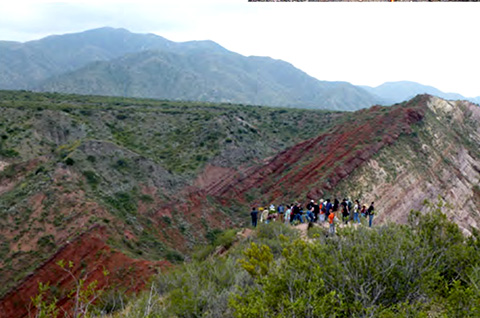
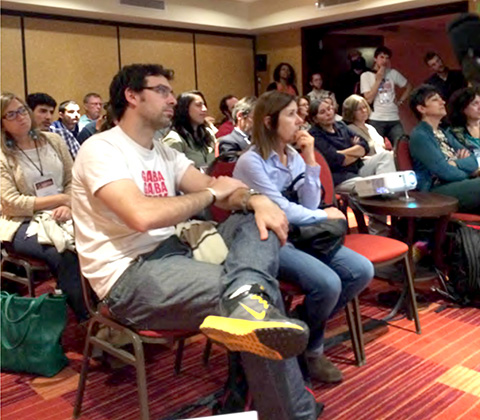
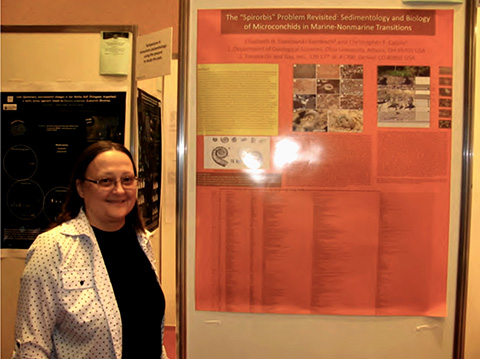
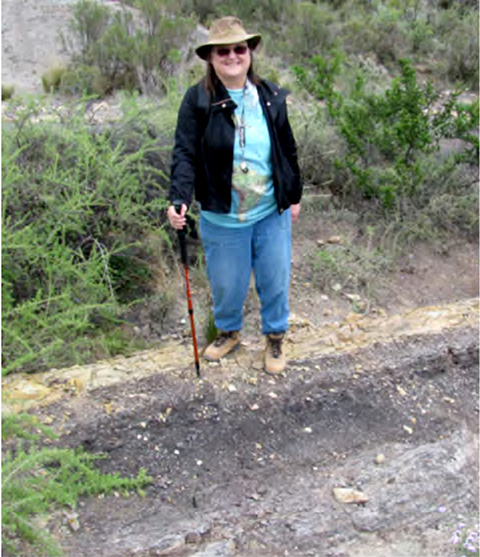
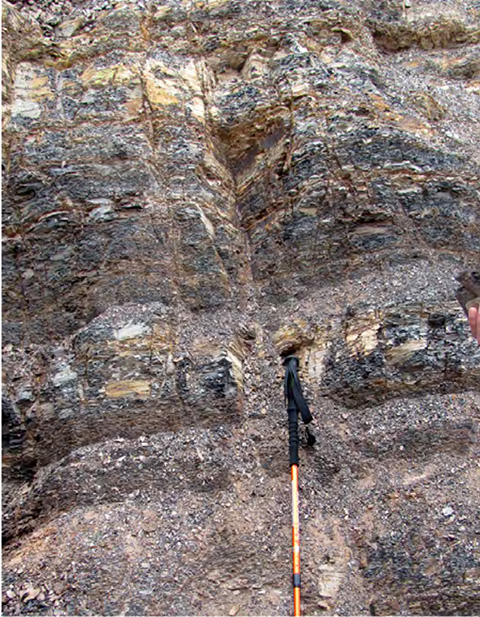
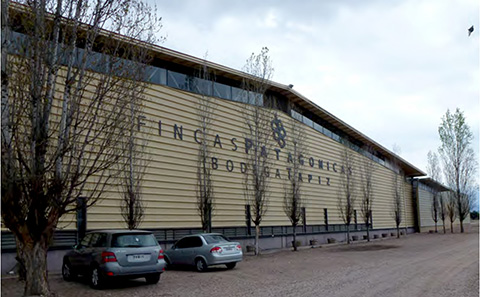
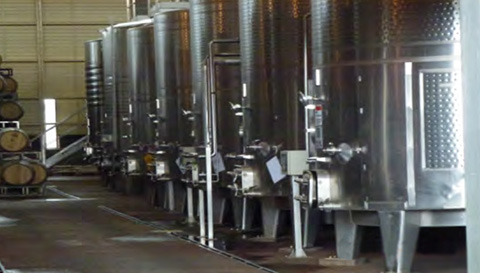
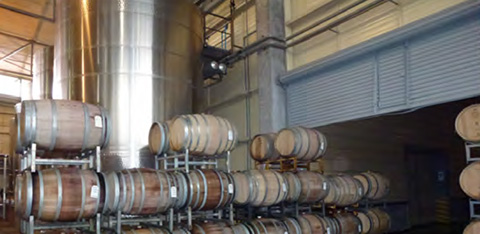
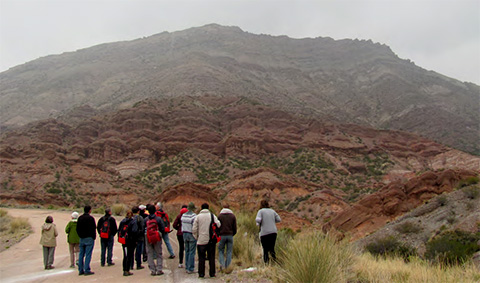
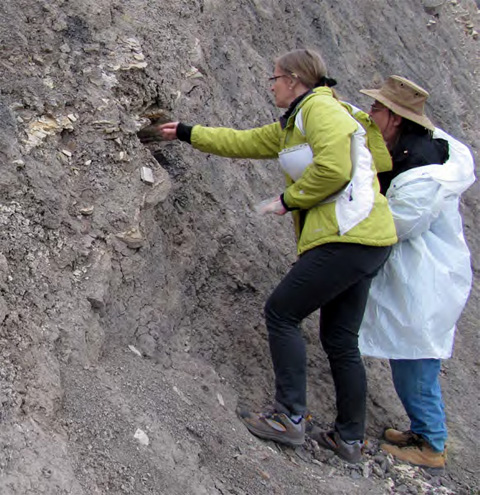

















Comments